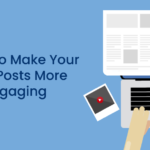Email marketing is one of the most effective online marketing tools available to businesses in today’s digital world. Whether you are a small business owner, a professional marketer, or a student who wants to understand more about it as part of the discipline, email marketing is vital. Today, we discuss email marketing, its importance, and how you can do your campaigns effectively.
What is Email Marketing?
Email marketing is the act of sending a commercial message, typically to a group of people, using email. All this is how a business can communicate and send relevant material, offers, and updates to customers and prospects—all to drive sales as they build relationships and foster brand loyalty.
Think of it as some sort of digital version of the traditional marketing flyer or brochure, but better in that it is more trackable and measureable.
Why is Email Marketing Important?
- Direct Communication: Email provides businesses direct communication with their audience—right in their inbox. Unlike social media, for example, where algorithms may limit how many eyes actually view your content, emails go straight to the receiver.
- High ROI: It is one of the highest when comparing other marketing channels, as stated in the industry reports. On average, for every dollar that a business spends on email marketing, it realizes a return of $42.
- Personalization: Through email marketing, you are able to segment your audience and create personalized messages that resonate with each individual. This way, you achieve better engagement and improved conversion rates.
- Measurable Results: Email marketing tools come with great analytics that enable you to measure open rates, click-through rates, conversions, and so on. These data points help you in fine-tuning your strategy for improved results over time.
- Cost-Effective: Compared to traditional channels of advertising, email marketing is inexpensive and hence within reach for every business size.
Key Components of Email Marketing
- Email List: An email list forms the very foundation of all the emails that you send out. Your email list may even be a collection of email addresses that you manage to acquire from customers, potential customers, or other business contacts. Your campaigns will be as good as your list, so it is very important to build and maintain a quality email list.
- Email Campaigns: These are the actual emails sent to your list, and they can be promotional, information-driven, or both. Common email campaigns include newsletters, new product announcements, special offers, and invitations to events.
- Subject Line: This is the very first thing that your target audience will see, hence it has to be good enough to get them to open the email in the first place. A well-crafted subject line can significantly influence your open rates.
- Email Content: Your email content should be relevant, valuable, and engaging. Be it tips, promotion of products, company news—whatever it may be—the message should always be clearly and concisely conveyed. Including a strong call-to-action is also important in guiding your readers regarding what action to do next.
- Design and Layout: Make sure the email is visually appealing, and reading it is fun. It should be clean, contain your branding, and fit on a mobile screen because most people use their phones to check emails.
- Automation: Email automation allows you to send targeted emails to your audience based on their behavior, preferences, or any other specified criteria. Examples include welcome emails, cart abandonment reminders, or personalized product recommendations.
Getting Started with Email Marketing
- Choosing Email Marketing Software: There are lots of email marketing services, including the likes of Mailchimp, Constant Contact, and HubSpot. Choose whichever is best suited for your needs within your budget.
- Grow Your Email List: First collect the email addresses of your website visitors, social media followers, and actual customers. You might do this through sign-up forms on your website, using lead magnets, or hosting giveaways.
- Craft Engaging Emails: Plan your email campaigns and then write good, engaging emails that add value to your subscribers. This can be in the form of problem-solving, useful tips, or special offers.
- Segment Your Audience: Divide your emailing list into smaller groups categorized by different demographics, purchase history, or anything else that relates to their engagement level. It will help you write more contextually for a specific segment.
- Monitor and Fine-Tune: Observe the key metrics related to email performance, like open rates, click-through rates, and conversions post-email deployment. Optimize and enhance the strategy for subsequent campaigns based on the results.
Best Practices for Email Marketing Success
- Get Permission: Always ensure that you have permission to email your contacts. It is a legal requirement, but it also ensures that your audience is interested and, actually, wants your content.
Test and Experiment: Use A/B testing to try out different subject lines, design, or content to see what works best with your audience.
- Keep Them on Their Toes: Be sending them regular emails to keep your brand at the top of their minds. But do not bombard them with too many emails because unsubscribes can be a result of this.
- Optimize for Mobile: Your emails should be mobile-friendly because most people most often will open your email with a smartphone.
- Respect Privacy: Your Subscribers have the right to know how their data will be collected and used. Give them an easy opt-out of your emails.
Conclusion
Email marketing is one of the most effective and low-budget forms of getting in touch with your audience to drive sales and develop lasting relationships. Learn the fundamentals and best practices that have helped businesses just like yours create wildly successful email campaigns with measurable results. Email marketing is one of the arrows in the quiver of digital marketers.










